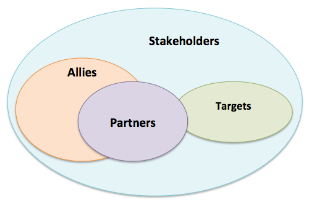Difference between revisions of "Watershed Definitions"
From Akvopedia
| Line 14: | Line 14: | ||
|width="90%"|is a change at the level of beneficiaries, end-users, communities. For example: Sustainable WASH services for all in districts x, y and z. | |width="90%"|is a change at the level of beneficiaries, end-users, communities. For example: Sustainable WASH services for all in districts x, y and z. | ||
|- | |- | ||
| − | | valign="top" style="text-align:left"|<font size="3" color=#969696> | + | | valign="top" style="text-align:left"|<font size="3" color=#969696>IWRM</font> |
| − | |width="90%" style="background:#ededed;"| | + | |width="90%" style="background:#ededed;"|is a process which promotes the coordinated development and management of water, land and related resources in order to maximise the resultant economic and social welfare in an equitable manner without compromising the sustainability of vital ecosystems. (Global Water Partnership) |
| + | |- | ||
| + | | valign="top" style="text-align:left"|<font size="3" color=#969696>IWRM terminology</font> | ||
| + | |width="90%"|Like any other sector, water resources managers use jargon. All of the following definitions are used in the Watershed Programme Document: IWRM, Water security, Water scarcity, Water governance, Ecosystems, Climate resilience. For people not trained in water resources management, such definitions may be new, overlapping and result in misunderstanding.<br> | ||
| + | In this glossary, a number of key definitions are given. Often, more than just one definition exists. The purpose of this section is meant as a primer and help us speak a single language. It is possible that other definitions may fit your work better, so you should not feel restricted to use only the following definitions. | ||
| + | What most of the definitions have in common is that they focus on both natural and social systems, that they try manage linkages between systems and that they integrate over scales (both geographical as well as hierarchical scales). | ||
| + | |- | ||
| + | | valign="top" style="text-align:left"|<font size="3" color=#969696>Partner</font> | ||
| + | |width="90%" style="background:#ededed;"|A stakeholder with whom we maintain an ongoing working relationship in which risks and benefits are shared, everyone contributes value (not just financial), and there is co-creation. In the Watershed Programme IRC, Akvo, Simavi and Wetlands International are partners as well as the organisations that we will engage with in a contractual relation. In addition, we may work well together with partners with whom we do not have a (financial) formal relationship. | ||
| + | [[Image:stakeholders-partners.png|right|150px|Stakeholders and partners]] | ||
| + | |- | ||
|} | |} | ||
Revision as of 23:16, 17 June 2016
| Allies | share or buy into, to some extent, in the ultimate goal of the programme (sustainability of WASH services) and are potential partners in the programme. |
| Climate resilience | can be generally defined as the capacity for a socio-ecological system to: (1) absorb stresses and maintain function in the face of external stresses imposed upon it by climate change and (2) adapt, reorganize, and evolve into more desirable configurations that improve the sustainability of the system, leaving it better prepared for future climate change impacts (Folke, 2006). |
| Ecosystem services | are the benefits people obtain from ecosystems. Provisioning services are the products obtained from ecosystems like water, food and fibres. Regulating services are the benefits obtained from the regulation of ecosystem processes like carbon sequestration and climate and the purification of water and air and pest and disease control. Cultural services are the nonmaterial benefits people obtain from ecosystems through spiritual enrichment, cognitive development, reflection, recreation, and aesthetic experiences. Supporting ecosystem services are those services that are necessary for the production of all other ecosystem services and include services such as nutrient recycling, primary production, soil formation and forming habitats for biodiversity. (Millennium Assessment, 2005) |
| Impact | is a change at the level of beneficiaries, end-users, communities. For example: Sustainable WASH services for all in districts x, y and z. |
| IWRM | is a process which promotes the coordinated development and management of water, land and related resources in order to maximise the resultant economic and social welfare in an equitable manner without compromising the sustainability of vital ecosystems. (Global Water Partnership) |
| IWRM terminology | Like any other sector, water resources managers use jargon. All of the following definitions are used in the Watershed Programme Document: IWRM, Water security, Water scarcity, Water governance, Ecosystems, Climate resilience. For people not trained in water resources management, such definitions may be new, overlapping and result in misunderstanding. In this glossary, a number of key definitions are given. Often, more than just one definition exists. The purpose of this section is meant as a primer and help us speak a single language. It is possible that other definitions may fit your work better, so you should not feel restricted to use only the following definitions. What most of the definitions have in common is that they focus on both natural and social systems, that they try manage linkages between systems and that they integrate over scales (both geographical as well as hierarchical scales). |
| Partner | A stakeholder with whom we maintain an ongoing working relationship in which risks and benefits are shared, everyone contributes value (not just financial), and there is co-creation. In the Watershed Programme IRC, Akvo, Simavi and Wetlands International are partners as well as the organisations that we will engage with in a contractual relation. In addition, we may work well together with partners with whom we do not have a (financial) formal relationship. |

